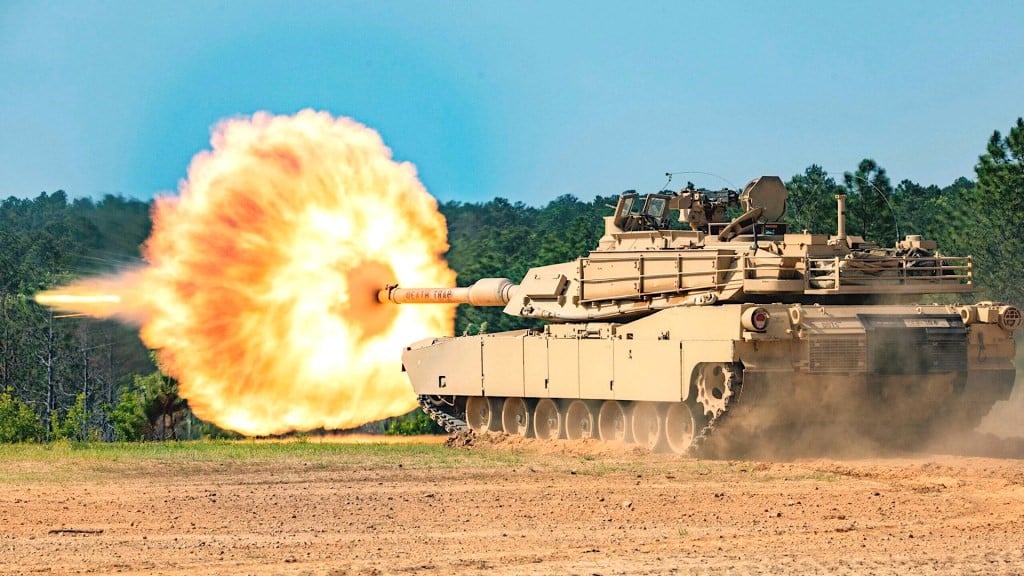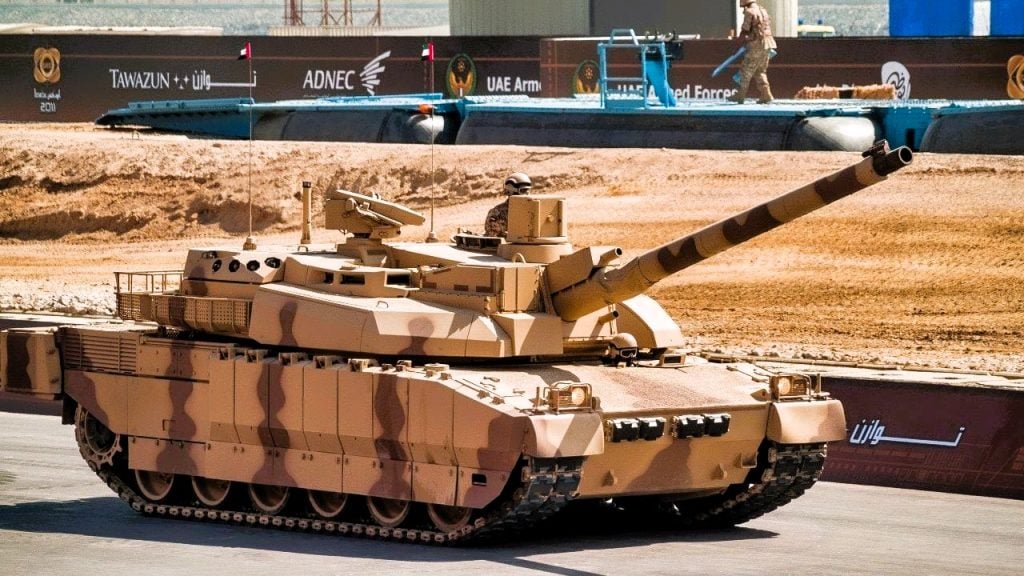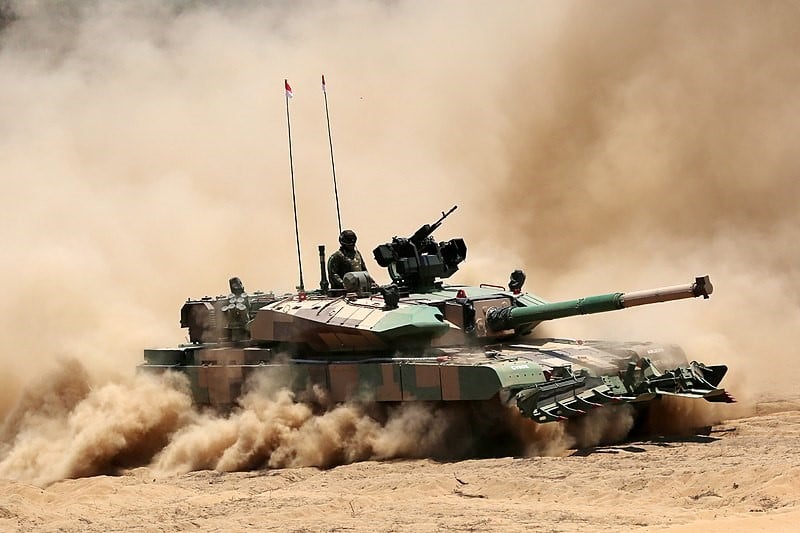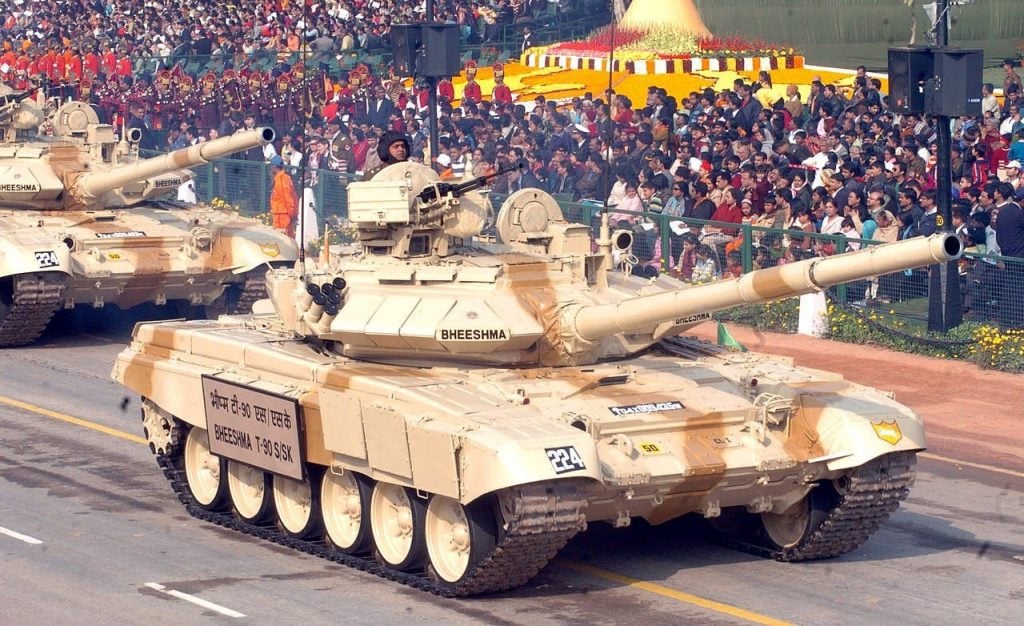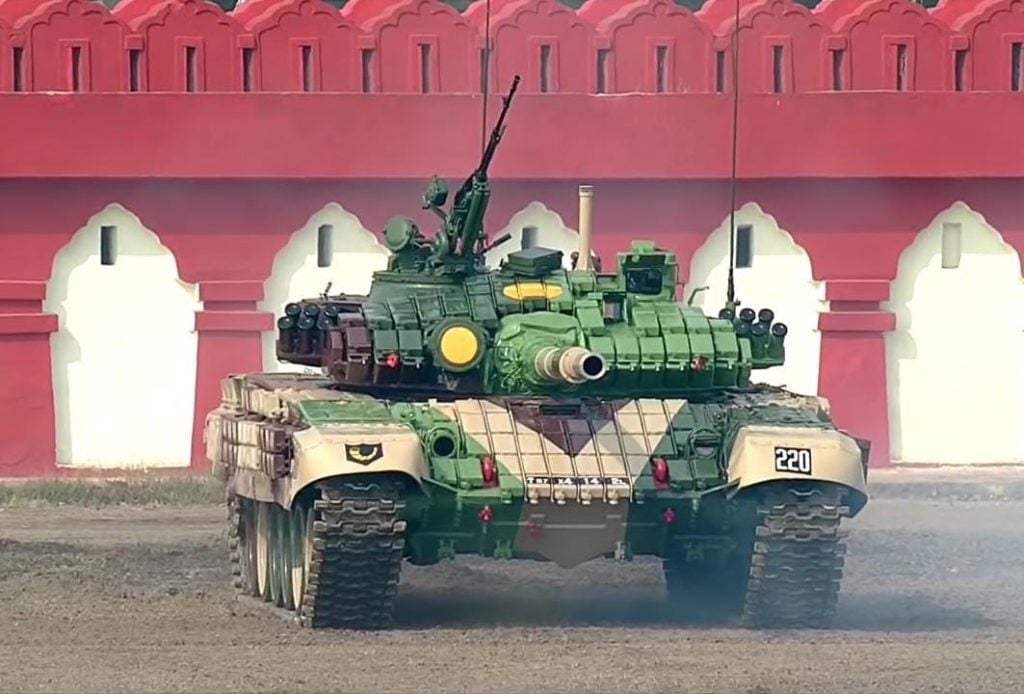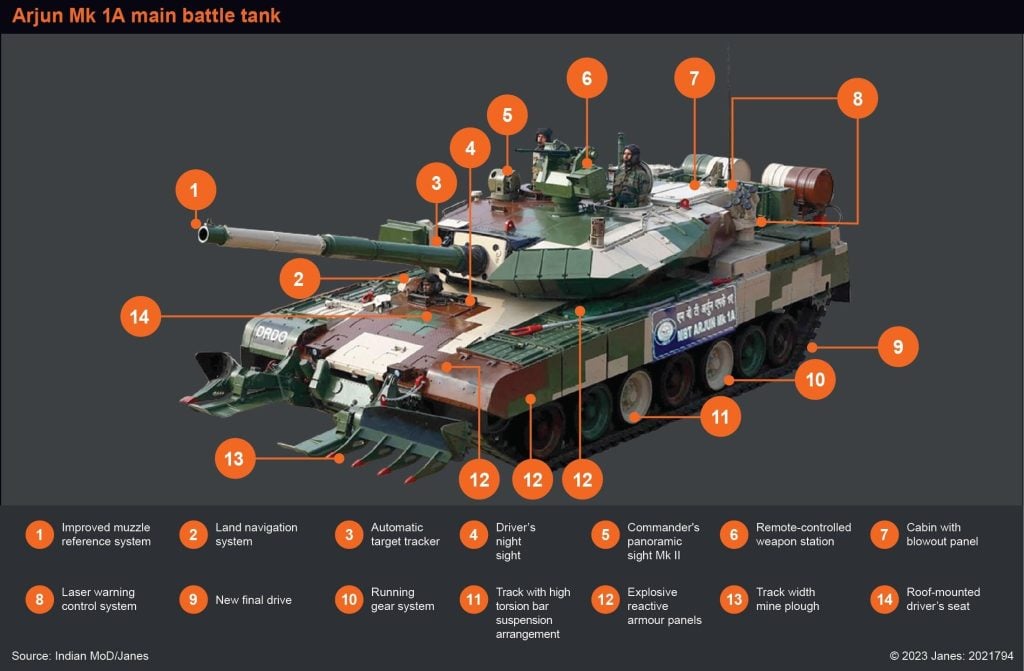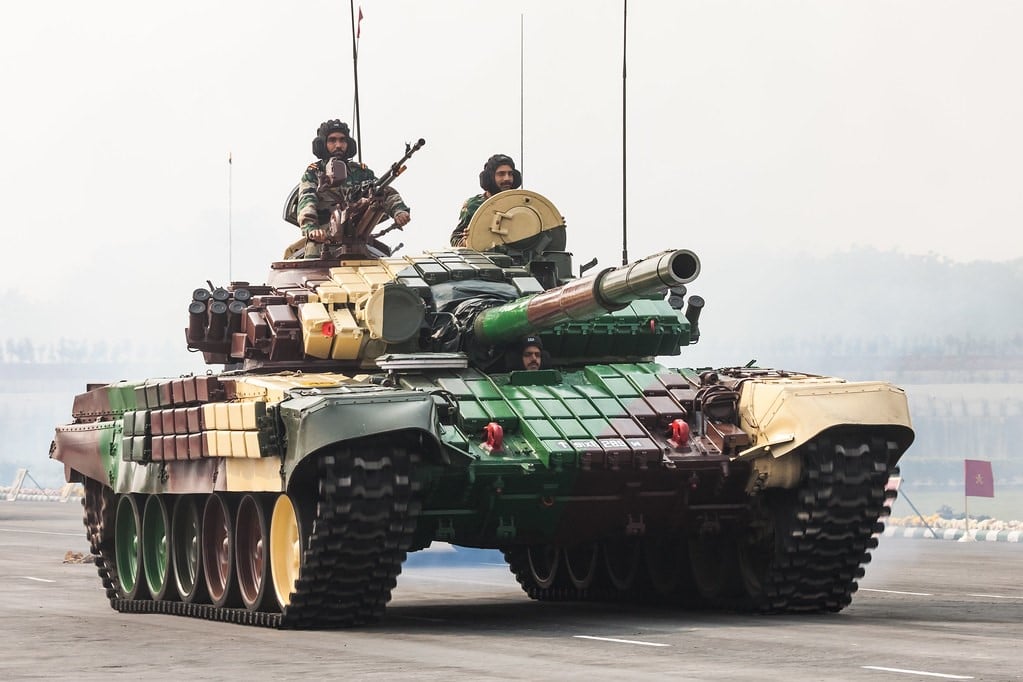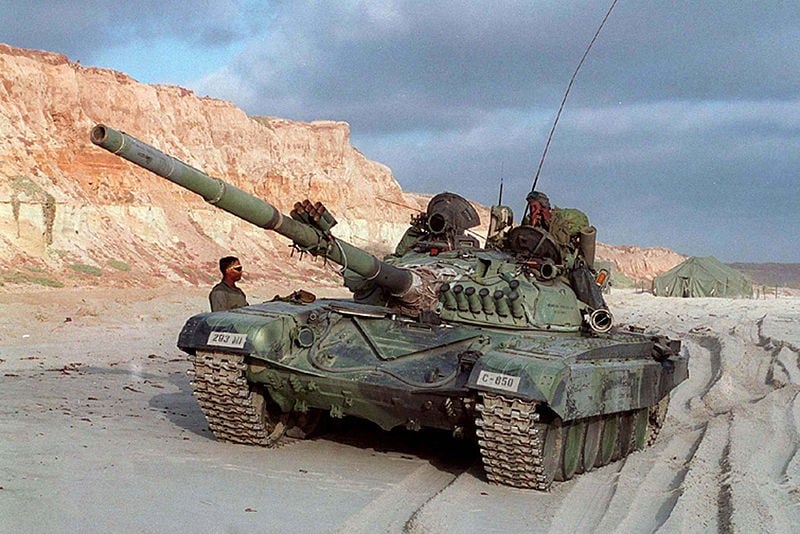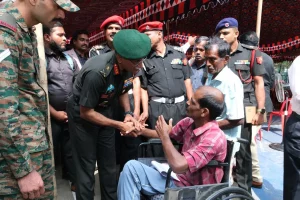The Indian Army is renowned for its diverse and sophisticated array of armored vehicles, designed to meet the unique challenges posed by its geographical and strategic landscape. Among these, tanks play a critical role in modern warfare, offering mobility, firepower, and protection. This article delves into the Top 6 Tanks of the Indian Army, highlighting their specifications, capabilities, and significance in maintaining India’s defense readiness.
Also Read | The 17 Powerful Aircraft in IAF
1. Arjun Main Battle Tank
Overview
The Arjun Main Battle Tank (MBT) is a testament to India’s indigenous defense capabilities. Developed by the DRDO (Defence Research and Development Organisation), the Arjun tank represents the culmination of years of research and development aimed at producing a world-class armored fighting vehicle.
Specifications
- Weight: 68 tons
- Length: 10.66 m (34 ft 11 in)
- Width: 3.70 m (12 ft 1 in)
- Height: 2.39 m (7 ft 10 in)
- Engine: 1,400 hp diesel engine
- Maximum Speed: 70 km/h (43 mph) on road, 40 km/h (25 mph) off-road
- Armament:
- 120 mm smoothbore gun
- 7.62 mm coaxial MG
- 12.7 mm anti-aircraft gun
Features
The Arjun is equipped with advanced features such as a fully digital fire control system, thermal imaging sights, and an automatic target tracking system. Its composite armor provides enhanced protection against various anti-tank weapons, while its active protection system can counter incoming threats.
Significance
The Arjun MBT represents India’s strategic intent to bolster its self-reliance in defense manufacturing. It is a powerful asset on the battlefield, capable of engaging both armored and soft targets effectively.
2. T-90 Bhishma
Overview
The T-90 Bhishma is an upgraded version of the Russian T-90 tank, specifically tailored to meet the Indian Army’s operational requirements. The Bhishma variant incorporates several advanced technologies to enhance its combat effectiveness.
Specifications
- Weight: 46.5 tons
- Length: 9.63 m (31 ft 7 in)
- Width: 3.78 m (12 ft 5 in)
- Height: 2.22 m (7 ft 4 in)
- Engine: 1,000 hp diesel engine
- Maximum Speed: 60 km/h (37 mph) on road, 40 km/h (25 mph) off-road
- Armament:
- 125 mm smoothbore gun
- 7.62 mm PKT machine gun
- 12.7 mm anti-aircraft gun
Features
The T-90 Bhishma boasts modern fire control systems, including a ballistic computer, laser rangefinder, and thermal sights, enhancing its accuracy and targeting capability. Its composite armor and explosive reactive armor provide improved protection against anti-tank munitions.
Significance
The T-90 Bhishma is a cornerstone of the Indian Army’s armored corps, providing a balance between mobility, firepower, and protection. Its operational flexibility and adaptability make it suitable for various terrains, particularly in the northern regions.
3. T-72 Ajeya
Overview
The T-72 Ajeya is an upgraded variant of the Soviet-era T-72 tank, widely used by the Indian Army. Known for its reliability and effectiveness, the Ajeya version features significant enhancements in terms of firepower and protection.
Specifications
- Weight: 41.5 tons
- Length: 9.53 m (31 ft 3 in)
- Width: 3.59 m (11 ft 9 in)
- Height: 2.23 m (7 ft 4 in)
- Engine: 780 hp diesel engine
- Maximum Speed: 60 km/h (37 mph) on road, 40 km/h (25 mph) off-road
- Armament:
- 125 mm smoothbore gun
- 7.62 mm PKT machine gun
- 12.7 mm anti-aircraft gun
Features
The T-72 Ajeya features improved armor protection, modern fire control systems, and enhanced mobility. Its adaptability to various combat scenarios makes it a valuable asset in both offensive and defensive operations.
Significance
The T-72 Ajeya continues to serve as a reliable main battle tank for the Indian Army. Its widespread deployment across various terrains underscores its operational versatility and effectiveness.
Also Read | 10 Essential Skills Indian Armed Forces Want from New Officers
4. Arjun MK1A
Overview
The Arjun MK1A is an advanced variant of the original Arjun tank, incorporating various upgrades to enhance its combat capabilities. This iteration reflects the lessons learned from earlier models and modern warfare requirements.
Specifications
- Weight: 68 tons
- Length: 10.66 m (34 ft 11 in)
- Width: 3.70 m (12 ft 1 in)
- Height: 2.39 m (7 ft 10 in)
- Engine: 1,400 hp diesel engine
- Maximum Speed: 70 km/h (43 mph) on road, 40 km/h (25 mph) off-road
- Armament:
- 120 mm smoothbore gun
- 7.62 mm coaxial MG
- 12.7 mm anti-aircraft gun
Features
The Arjun MK1A boasts enhanced firepower, improved armor protection, and upgraded electronic systems. Its capabilities include better situational awareness through advanced sensors and target acquisition systems.
Significance
The Arjun MK1A reinforces India’s commitment to indigenous defense production. It symbolizes the evolving landscape of armored warfare and the importance of modernization in maintaining a competitive edge.
5. T-72 Ajeya MK2
Overview
The T-72 Ajeya MK2 is an upgraded version of the T-72 Ajeya, incorporating advanced technologies to enhance its operational effectiveness. This variant reflects the Indian Army’s commitment to maintaining its armored fleet.
Specifications
- Weight: 41.5 tons
- Length: 9.53 m (31 ft 3 in)
- Width: 3.59 m (11 ft 9 in)
- Height: 2.23 m (7 ft 4 in)
- Engine: 780 hp diesel engine
- Maximum Speed: 60 km/h (37 mph) on road, 40 km/h (25 mph) off-road
- Armament:
- 125 mm smoothbore gun
- 7.62 mm PKT machine gun
- 12.7 mm anti-aircraft gun
Features
The T-72 Ajeya MK2 is equipped with modernized fire control systems, improved armor, and enhanced mobility features. These upgrades enable the tank to operate effectively in various combat scenarios.
Significance
The T-72 Ajeya MK2 is a vital component of the Indian Army’s armored forces. Its enhancements ensure that it remains relevant and capable of addressing contemporary battlefield challenges.
6. T-72 Ajeya MK1
Overview
The T-72 Ajeya MK1 is an earlier variant of the T-72 tank, designed to meet the requirements of the Indian Army. Despite its age, it remains a significant part of the armored fleet.
Specifications
- Weight: 41.5 tons
- Length: 9.53 m (31 ft 3 in)
- Width: 3.59 m (11 ft 9 in)
- Height: 2.23 m (7 ft 4 in)
- Engine: 780 hp diesel engine
- Maximum Speed: 60 km/h (37 mph) on road, 40 km/h (25 mph) off-road
- Armament:
- 125 mm smoothbore gun
- 7.62 mm PKT machine gun
- 12.7 mm anti-aircraft gun
Features
The T-72 Ajeya MK1 is equipped with basic fire control systems and armor protection typical of its era. While it may lack some modern features, it still provides reliable performance in combat.
Significance
The T-72 Ajeya MK1 represents the legacy of the T-72 family in the Indian Army. Its continued use demonstrates the effectiveness of well-designed armored vehicles and the importance of maintaining operational capabilities.
Also Read | 5 Creative Ways US Jets Use Camouflage
Conclusion
The tanks of the Indian Army play a pivotal role in ensuring national security and maintaining strategic deterrence. From the advanced Arjun Main Battle Tank to the reliable T-72 Ajeya, each tank brings unique capabilities that contribute to the overall effectiveness of the armored corps. The continuous upgrades and adaptations of these tanks reflect the Indian Army’s commitment to modernization and self-reliance in defense production.
As the landscape of warfare evolves, the Indian Army is poised to further enhance its armored capabilities, ensuring that its tanks remain at the forefront of technological advancements. The emphasis on indigenous development, such as the Arjun series, underscores a strategic move towards reducing dependency on foreign defense systems while fostering domestic manufacturing capabilities.
In conclusion, the top six tanks of the Indian Army exemplify a blend of heritage, modernization, and technological innovation. They serve not only as powerful tools of warfare but also as symbols of national pride and resilience. The Indian Army’s commitment to continuous improvement and adaptation will ensure its armored forces remain a formidable presence on the battlefield for years to come.
FAQs
1. Which is the most powerful tank of Indian Army?
The Arjun Mk-1A boasts 54.3% indigenous content, an increase from the 41% found in the previous model. Often referred to as “Hunter Killers,” this latest tank version features a powerful 120mm rifled gun and Kanchan Armour, making it the most formidable armored system in the Army’s inventory.
2. Which is the 1st tank in India?
The Vijayanta was the Indian Army’s first homegrown tank. Its prototype was finalized in 1963, and it officially entered service on December 29, 1965. The initial batch of 90 tanks was manufactured by Vickers in the UK. Production continued at the Heavy Vehicles Factory in Avadi until 1983, resulting in a total of 2,200 units produced.
3. Is Arjun better than T90?
When comparing the specifications of the Arjun and T-90, it’s evident that the Arjun is significantly heavier than the T-90. However, the Arjun is equipped with a 1400 hp engine, while the T-90 has a 950 hp engine. This difference in power accounts for the Arjun’s top speed of 72 km/h, compared to the T-90’s top speed of 60 km/h.
4. How many T-72 India has?
Earlier this month, we reported that India intends to completely revamp its tank fleet by transitioning to T-72 Ajeya tanks, which are expected to number between 2,400 and 2,500.
5. What is India’s strongest tank?
The Main Battle Tank (MBT) Arjun is a multi-laboratory initiative by DRDO, led by CVRDE. This advanced tank features exceptional firepower, high mobility, and outstanding protection.
